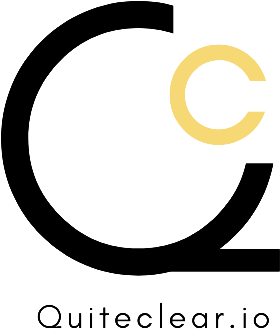Top 5 Mistakes to Avoid When Ordering Clear Aligners for Your Patients

As a trusted orthodontist, your patients rely on you to provide the best treatment options for their dental health. Clear aligners have become a popular choice for patients seeking a discreet, comfortable way to correct misaligned teeth. These aligners offer flexibility, aesthetic appeal, and convenience, making them a go-to solution for patients who want to avoid traditional braces. However, while clear aligners are often preferred for their simplicity, the process of ordering them from a white-label manufacturer comes with its own set of challenges. Any mistakes in the ordering process can have far-reaching impacts on patient satisfaction, treatment outcomes, and the overall efficiency of your practice.
In this blog, let’s explore the top five mistakes to avoid when ordering clear aligners to ensure successful treatment and a seamless partnership with your manufacturer. By understanding these pitfalls, you’ll not only avoid unnecessary headaches but also enhance the quality of care you provide to your patients.
- Incomplete or Inaccurate Patient Records
One of the most common mistakes orthodontists make when ordering clear aligners is providing inaccurate patient scans. Clear aligners require precise measurements to create custom trays tailored to each patient’s specific needs. Without accurate data, the aligners may not fit properly, leading to discomfort, delays in treatment, and increased costs due to remakes or adjustments. This can frustrate patients and negatively impact their experience with the treatment.
How to Avoid It: Ensure you’re taking accurate error-free impressions or digital scans and uploading them to the Quiteclear Dashboard. Double-check the scans to ensure there are no broken or missing meshes or the attachments don’t overlap on the numbering of the stages, before submission to avoid any discrepancies. Investing in digital scanning technology can also reduce the likelihood of errors in the data collection process and enhance the precision of your aligner orders.
- Ignoring the Importance of Compliance Tracking
Patient compliance is a critical component of successful clear aligner treatment. Non-compliance often leads to prolonged treatment timelines and suboptimal results, leaving both patients and orthodontists unsatisfied with the outcome.
How to Avoid It: Ask your manufacturer how to recognize clues of patient complaints when there are fitment-related complaints. As a means to identify such issues, Quiteclear has a protocol. We manufacture a new 3d printed model and make a clear aligner on the new model. If that does not fit, we request a new scan. With the new scan, we repeat the process of making a new aligner on a newly 3d printed model and compare the fit on the new model versus the older model. If there is a fitment variance, the issue of patient complaince can be one major factor.
- Underestimating the Treatment Complexity
Some orthodontists mistakenly assume that all clear aligner cases are simple and can be handled with basic aligner designs. However, this isn’t always the case. Complex cases involving severe misalignment, bite issues, or teeth rotations often require advanced planning, specialized attachments, or even refinements to the initial treatment plan. Without addressing the complexity upfront, the final results may not align with patient expectations.
How to Avoid It: Consult with your manufacturer’s dental support team to evaluate each case’s complexity thoroughly. While doing this, also consider the plastic material you select for the case. If the case is complex, there are higher chances of more attachments involved. The mono laer aligner sheets are an affordable option but will cause high discomfort to the patient while removing the aligner due to its stiffness. Ensure that your treatment plans are comprehensive, with detailed specifications for adjustments that may be needed. The solution Quiteclear has for this is the flexibility to order aligners in smaller sets. If the treatment is not tracking as it should since only a few sets are ordered at a time, the loss is much less than that borne when all sets are ordered and such an issue arises. Discuss with your manufacturer if additional attachments, refinements, or specialized aligner designs are required to handle the more challenging aspects of the case. This will enable you to manage patient expectations better and provide more accurate treatment timelines.
- Skipping Collaboration with Your Manufacturer
Clear aligner treatments benefit greatly from collaboration between orthodontists and their white-label manufacturers. Skipping out on regular communication or failing to leverage the expertise of the manufacturer can result in miscommunication, delays, and misaligned expectations. Manufacturers often have insights into the latest advancements in aligner technology and best practices, which can be valuable in enhancing patient outcomes.
How to Avoid It: Engage in continuous dialogue with your aligner manufacturer. Many manufacturers have clients who might be experts in this field. They can put you in touch with them and help you network and solve issues you might be new to. Also, with experience, the manufacturer might be more expert in helping you find a solution to issues that you might be new to. Leverage this expertise to refine your treatment strategies and ensure the aligners are designed to meet the specific needs of your patients. Regular check-ins can also help you stay updated on the latest technologies or materials available for aligner treatments, ensuring your patients receive the best possible care.
- Not Planning for Adjustments or Refinements
A common error when ordering clear aligners is assuming that the initial set will suffice for the entire treatment. In reality, many patients require refinements or adjustments at the end of their treatment to achieve optimal results. Failing to plan and inform the patient of these refinements can lead to a dissatisfied patient.
How to Avoid It: Inform the patient of the chances of refinement. Make them understand how the mechanism of the tooth movement works. You must communicate to them the seriousness of compliance with 22 hours a day wear time. Also, make them aware of the repercussions of not complying. Taking a proactive approach ensures smoother patient experiences and avoids the frustration of last-minute adjustments.
Partnering with a Reliable Manufacturer is Key
Avoiding these mistakes is crucial to providing high-quality treatment with clear aligners. By maintaining accurate records, periodic tracking, addressing treatment complexity, and collaborating closely with your white-label manufacturer, you can ensure successful patient outcomes. In addition to these steps, choosing a reliable and experienced manufacturer can make all the difference in delivering top-tier orthodontic care.
At Quiteclear, we understand the importance of precision and communication in delivering effective aligner solutions. Our dedicated B2B services are designed to support orthodontists in providing the highest standard of care for their patients. Whether it’s ensuring the accuracy of the clear aligner being delivered to your patient or helping you track compliance, Quiteclear is committed to making the clear aligner process as seamless as possible. Contact us today to learn how we can assist you in optimizing your clear aligner treatment processes and improving patient satisfaction.
